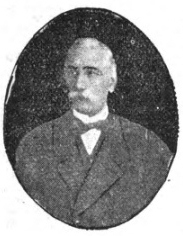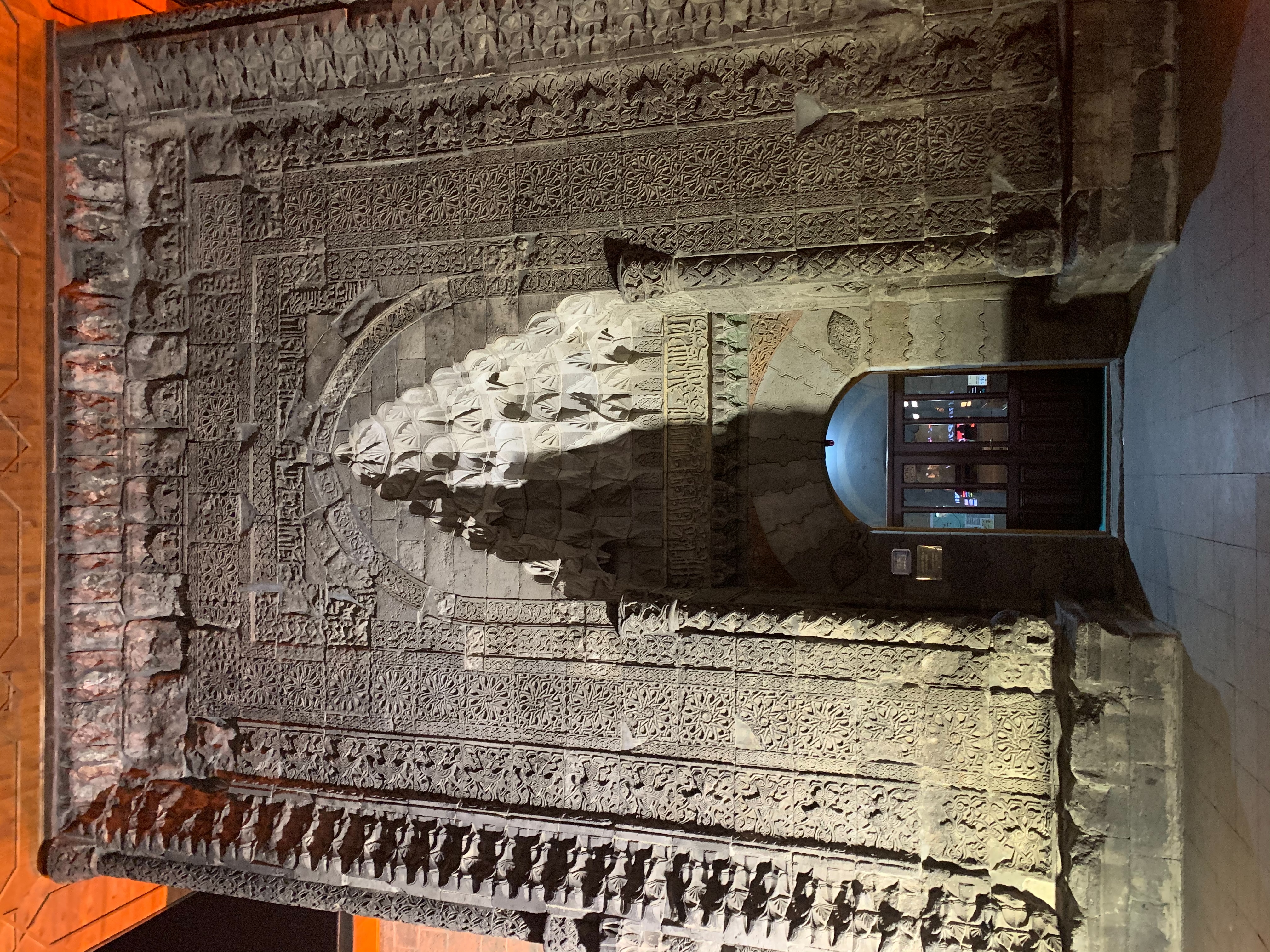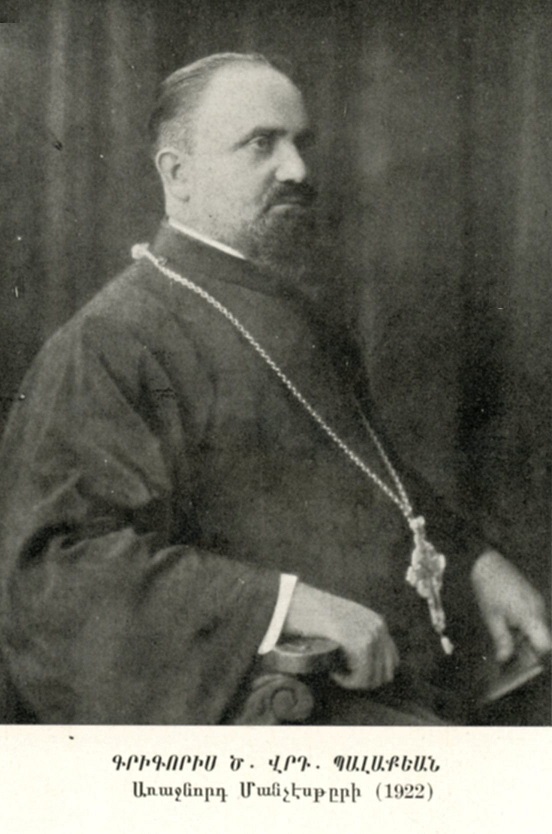|
Sanasarian College
The Sanasarian College (, ) was an Armenian language, Armenian-language educational institution in the city of Erzurum (called Erzurum, Karin by Armenians), Ottoman Empire founded in 1881 by an Armenian merchant, Mkrtich Sanasarian. Its students were children of primary and secondary school age. It also had a pedagogical department for the training of Armenian teachers and a trade school. Description It was a school of high grade which consisted of teachers who were mostly educated in Germany. The college had a nine-year course, with a high grade education that was taught. The school lasted until the Armenian genocide, when most of the teachers were killed and the building was ruined. Sanasarian college was a foremost institution for Culture of Armenia, Armenian culture and education in the eastern provinces during the decades before World War I. England, English explorer, writer, and natural historian Isabella Bird (1831–1904) described the college as follows: After the Arm ... [...More Info...] [...Related Items...] OR: [Wikipedia] [Google] [Baidu] |
Erzurum
Erzurum (; ) is a List of cities in Turkey, city in eastern Anatolia, Turkey. It is the largest city and capital of Erzurum Province and is 1,900 meters (6,233 feet) above sea level. Erzurum had a population of 367,250 in 2010. It is the site of ancient Theodosiopolis. The city uses the double-headed eagle as its coat-of-arms, a motif that has been a common symbol throughout Anatolia since the Bronze Age. Erzurum has winter sports facilities, hosted the 2011 Winter Universiade, and the 2023 Winter Deaflympics (in March 2024). Name and etymology The city was originally known in Armenian language, Armenian as Karno K'aghak' (), meaning city of Karin, to distinguish it from the district of Karin (wikt:Կարին, Կարին). It is presumed its name was derived from a local tribe called the Karenitis. Darbinian, M. "Erzurum," Armenian Soviet Encyclopedia. Yerevan: Armenian Academy of Sciences, 1978, vol. 4, p. 93. An alternate theory contends that a local princely family, the Kams ... [...More Info...] [...Related Items...] OR: [Wikipedia] [Google] [Baidu] |
Google Books
Google Books (previously known as Google Book Search, Google Print, and by its code-name Project Ocean) is a service from Google that searches the full text of books and magazines that Google has scanned, converted to text using optical character recognition (OCR), and stored in its digital database.The basic Google book link is found at: https://books.google.com/ . The "advanced" interface allowing more specific searches is found at: https://books.google.com/advanced_book_search Books are provided either by publishers and authors through the Google Books Partner Program, or by Google's library partners through the Library Project. Additionally, Google has partnered with a number of magazine publishers to digitize their archives. The Publisher Program was first known as Google Print when it was introduced at the Frankfurt Book Fair in October 2004. The Google Books Library Project, which scans works in the collections of library partners and adds them to the digital inventory, ... [...More Info...] [...Related Items...] OR: [Wikipedia] [Google] [Baidu] |
History Of Erzurum
Erzurum (; ) is a city in eastern Anatolia, Turkey. It is the largest city and capital of Erzurum Province and is 1,900 meters (6,233 feet) above sea level. Erzurum had a population of 367,250 in 2010. It is the site of ancient Theodosiopolis. The city uses the double-headed eagle as its coat-of-arms, a motif that has been a common symbol throughout Anatolia since the Bronze Age. Erzurum has winter sports facilities, hosted the 2011 Winter Universiade, and the 2023 Winter Deaflympics (in March 2024). Name and etymology The city was originally known in Armenian as Karno K'aghak' (), meaning city of Karin, to distinguish it from the district of Karin ( Կարին). It is presumed its name was derived from a local tribe called the Karenitis. Darbinian, M. "Erzurum," Armenian Soviet Encyclopedia. Yerevan: Armenian Academy of Sciences, 1978, vol. 4, p. 93. An alternate theory contends that a local princely family, the Kamsarakans, the Armenian off-shoot of the Iranian Kārin Pahla ... [...More Info...] [...Related Items...] OR: [Wikipedia] [Google] [Baidu] |
Armenian Schools
Schools and universities in Armenia Some of universities in Armenia: *American University of Armenia *Yerevan State University *Yerevan State Medical UniversityRussian-Armenian State UniversityYerevan, ArmeniaUniversité Française en ArménieYerevan, ArmeniaYerevan, ArmeniaYerevan Physics InstituteYerevan, ArmeniaYerevan State Academy of Fine ArtsYerevan, ArmeniaYerevan State Linguistic UniversityYerevan, ArmeniaNational Academy of Sciences of Armenia * Schools outside Armenia Armenian Elementary Schools ;Greece[...More Info...] [...Related Items...] OR: [Wikipedia] [Google] [Baidu] |
Western Armenia
Western Armenia (Western Armenian: Արեւմտեան Հայաստան, ''Arevmdian Hayasdan'') is a term to refer to the western parts of the Armenian highlands located within Turkey (formerly the Ottoman Empire) that comprise the historical homeland of the Armenians. Western Armenia, also referred to as Byzantine Armenia, emerged following the division of Greater Armenia between the Byzantine Empire (Western Armenia) and Sassanid Persia ( Eastern Armenia) in AD 387. Since the Armenian genocide, the Armenian diaspora as well as Armenians indigenous to modern Turkey have sought political representation in Western Armenia or reunification with the Republic of Armenia. The area was conquered by the Ottomans in the 16th century during the Ottoman–Safavid War (1532–1555) against their Iranian Safavid arch-rivals. Being passed on from the former to the latter, Ottoman rule over the region became only decisive after the Ottoman–Safavid War of 1623–1639. The area th ... [...More Info...] [...Related Items...] OR: [Wikipedia] [Google] [Baidu] |
Educational Institutions Disestablished In 1912
Education is the transmission of knowledge and skills and the development of character traits. Formal education occurs within a structured institutional framework, such as public schools, following a curriculum. Non-formal education also follows a structured approach but occurs outside the formal schooling system, while informal education involves unstructured learning through daily experiences. Formal and non-formal education are categorized into levels, including early childhood education, primary education, secondary education, and tertiary education. Other classifications focus on teaching methods, such as teacher-centered and student-centered education, and on subjects, such as science education, language education, and physical education. Additionally, the term "education" can denote the mental states and qualities of educated individuals and the academic field studying educational phenomena. The precise definition of education is disputed, and there are disagreements ... [...More Info...] [...Related Items...] OR: [Wikipedia] [Google] [Baidu] |
Education In The Ottoman Empire
In the Ottoman Empire each, and every Millet (Ottoman Empire), millet (religious group) established a schooling system serving its members.Strauss, , 9781317118442. Google Books]PT194 Education, therefore, was largely divided on ethnic and religious lines: few non-Muslims attended schools for Muslim students and vice versa. Most institutions that did serve all ethnic and religious groups taught in French or in other languages.Strauss, , 9781317118442. Google Books] PT195 Education stages The first stage of elementary education and teaching in the Ottoman Empire has been called as Sibyan Schools (Sibyan Mektepleri). The education system of Ottomans founded on Sıbyan Sc ...[...More Info...] [...Related Items...] OR: [Wikipedia] [Google] [Baidu] |
Nersisian School
Nersisian School (, ''Nersisian Dprots''; ka, ნერსისიანის სემინარია, ; ) was an Armenian higher education institution in the city of Tiflis, then Russian Empire (now Tbilisi, Georgia). It operated exactly for one century, from 1824 to 1924. It was founded by Bishop Nerses V Ashtaraketsi, Armenian primate of the diocese of Georgia (later Catholicos of All Armenians Nerses V), after whom it was named. History In the 19th century Tiflis (Tbilisi) was a major Armenian cultural center with a large Armenian population. Numerous Armenian schools, various publications, drama associations and societies, charities and nonprofit organizations functioned in the city. The Nersisian School officially opened in 1824 and throughout its existence it had a unique role in Eastern Armenian education. In 1905, the school was destroyed in a bombing. Afterward, Alexander Mantashev solved all the school's financial problems with the designing and building of ... [...More Info...] [...Related Items...] OR: [Wikipedia] [Google] [Baidu] |
Vartan Makhokhian
Vartan Makhokhian (; 31 May 1869 – 10 February 1937) was an Armenian painter who lived in the Ottoman Empire and France and was known for his marine paintings. After completing his studies at the Berlin Academy of Arts, he traveled and exhibited his art in France, Germany, Egypt and elsewhere. His art is displayed in various museums throughout the world. Life and career Vartan Makhokhian was born in Trabzon in the Ottoman Empire on 31 May 1869 to Armenian parents. His father, Aristakes Makhokhian, was a merchant who demanded that his two daughters and four sons be educated. In 1875, Makhokhian began his early education at a local Armenian school where he took an interest in drawing. He later attended the prestigious Sanasarian College in Erzurum, returning to Trabzon after five years of study. During his time spent at Sanasarian, Makhokhian learned to paint. He also learned to play the violin and studied music theory. Makhokhian's uncle persuaded him to pursue a career in art. I ... [...More Info...] [...Related Items...] OR: [Wikipedia] [Google] [Baidu] |
Vartkes Serengülian
Vartkes Serengülian (; also known as Hovhannes or Gisak; 1871, in Erzurum – 1915, in Urfa), was an Ottoman Armenian political and social activist, and a member of Ottoman Parliament. Biography He studied in the Ardzinian and Sanasarian colleges of Karin (Erzurum). In late 1880s he organized demonstrations in Karin and was arrested. After he was released in 1892 he worked in Constantinople, then in Bulgaria and the Russian Empire as a revolutionary activist. In Van, Serengyulian supported the ideas of Hrayr Dzhoghk, and cooperated with the Armenakan Party. He was arrested in Van and in 1901 was sentenced to a 101-year prison sentence. The Armenian Revolutionary Federation (ARF) reportedly attempted to organize a prison break for him in the beginning of 1908. In the same year, after the Young Turk Revolution he was released from prison and elected as a member of the Ottoman parliament representing the ARF. As an MP he advocated the creation of trade unions within the Ottoman E ... [...More Info...] [...Related Items...] OR: [Wikipedia] [Google] [Baidu] |
Grigoris Balakian
Grigoris Balakian (; 1875 – 8 October 1934), was a bishop of the Armenian Apostolic Church, in addition to being a survivor and memoirist of the Armenian genocide. Life Grigoris Balakian was born in Tokat in the Ottoman Empire, and graduated from the Sanasarian College in Erzurum. He had been studying architecture in Germany for two years and got a degree in civil engineering. He became a celibate priest ordained under the monastic name Grigoris Balakian. On 24 April 1915 he was among the group of 250 leading Armenian figures of Constantinople who were arrested and deported. One group was deported to Ayaş. Balakian was deported to Çankırı, north-east of Ankara with the rest of the 190 other deportees from the capital. Only 16 of them would survive. He marched with 48 deportees from Çankırı in the direction of Deir ez-Zor in the Syrian desert. On the way Balakian won the confidence of captain of constabulary Shukri Bey and learned about the Ottoman government's plan to ... [...More Info...] [...Related Items...] OR: [Wikipedia] [Google] [Baidu] |








